-
-
-
-
Search
-
-
0
-
Shopping Cart
xProducts:0Cart Empty
-
By Glen Kalem-Habib
© all rights reserved copyright 2023
Almost a decade ago, I wrote about a newly discovered publication I found of The Prophet which I had purchased for our collections, whose relatively unknown history, was surprisingly linked to World War II.
The article entitled The Prophet of War spoke of a small paperback edition of The Prophet that was not for “public sale” but was a complete copy, no larger than your average smartphone. The book came about via a joint initiative between the US government, and the newly formed not-for-profit Council on Books in Wartime, which published pre-chosen titles under the - Armed Services Inc.
The result was the birth of the Armed Services Edition (ASE) library of books. Between 1943-1947 a series of 1322 books with varying titles were published, these included popular westerns, science fiction, and murder mysteries. Printed and distributed, it’s believed that a staggering 123 million copies were published in its relatively short printing life. Most ASE books were complete and unabridged reprints of their original texts.
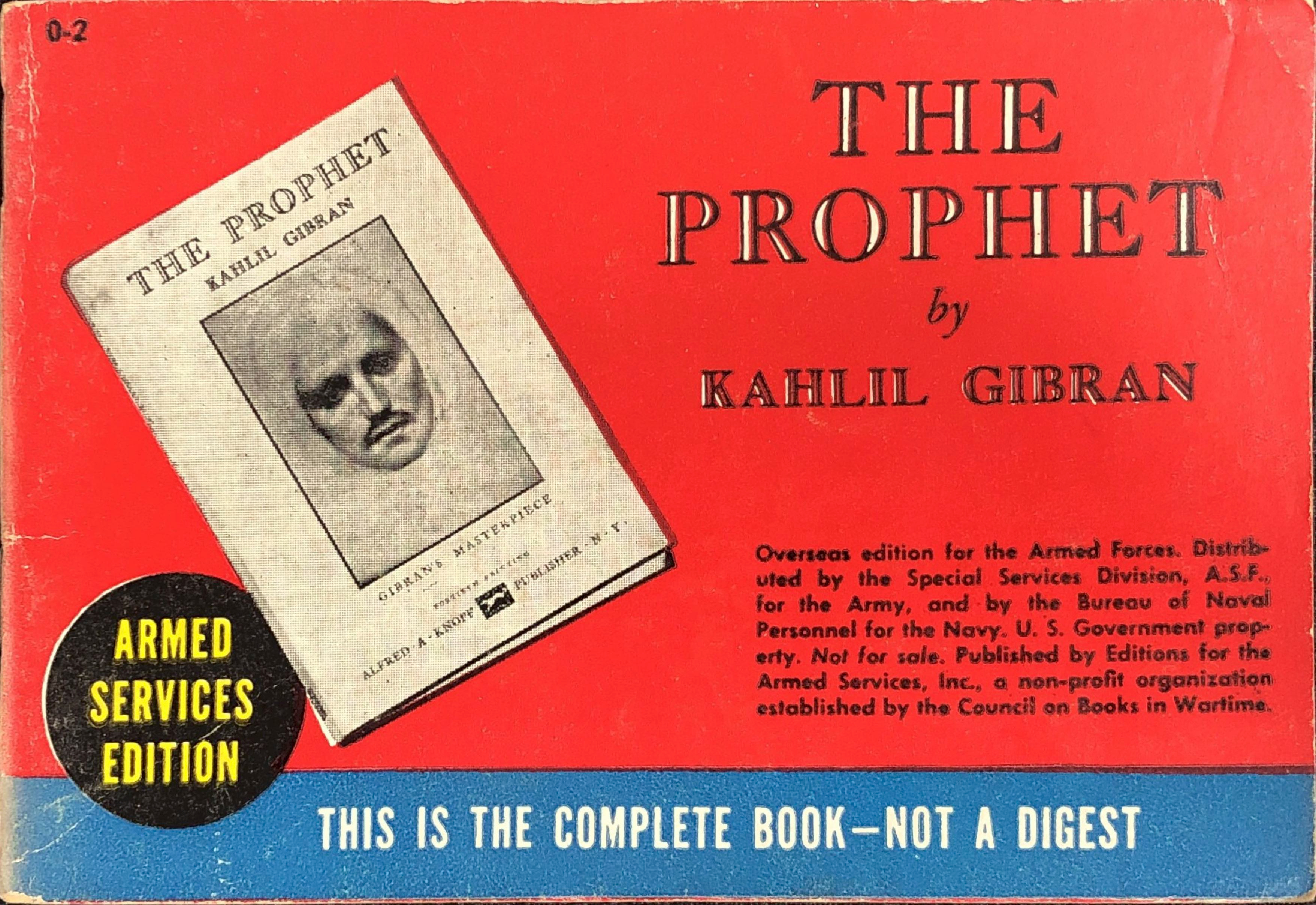
I remember feeling so thrilled to learn that such a copy existed, as there was little to no information about it; at least not in our circle. This was probably also due to the fact that the book was not for public sale, and it wasn't until ex-owners and collectors began selling them online that we were introduced to them. So fast forward to 2023, when yet another recent purchase linked The Prophet to World War II appeared, I got the same thrill and wanted to know 'the story" behnd it. This time, it was not a book, but a 16-inch Transcription Record that included a recording of The Prophet narrated by the late entertainer-actor Raymond Burr.
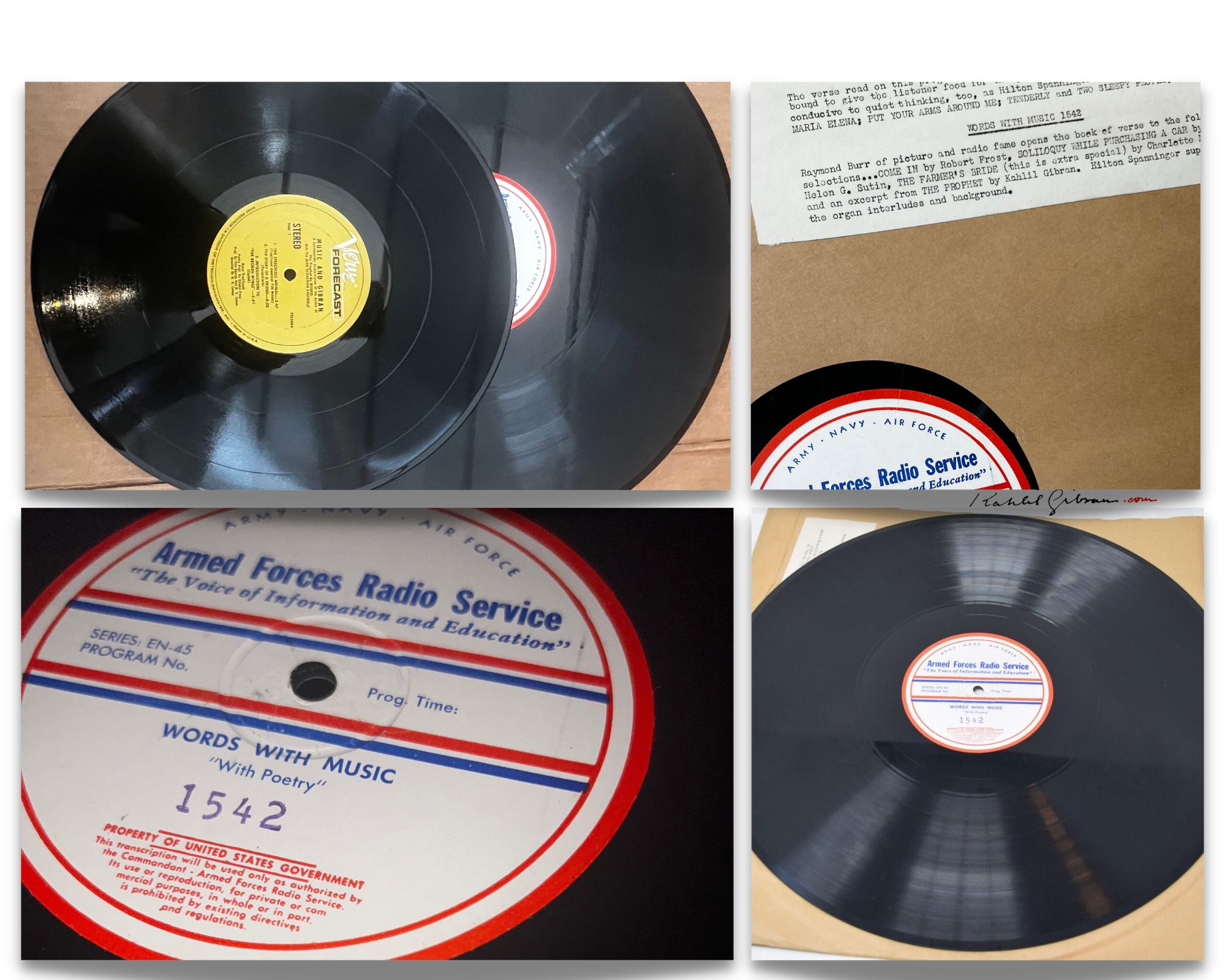
Now, if you are anything like me, you’re probably asking; What is a 16-inch Transcription Recording? And how did it become a voice of choice for the military? Here is what I found out.
16-inch Transition Records were a popular format for recorded music in the early 20th century. They were larger in size than the standard 12-inch records, made of a flat disc, but cut from a solid disc of vinyl, and were used to store audio information, offering longer playing times and better sound quality. These records were favored by radio stations for their ability to broadcast music for longer periods without the need for frequent changes.
Why did the military use them?
Like the ASE books mentioned above the 16-inch 'military,' Transcription Records were Government produced and not for Public Sale. Managed and recorded by the American Forces Network (AFN) they produced television and radio broadcasts, specially crafted for the U.S. Army, Navy, and Air Forces, stationed or assigned overseas.
These recordings played a crucial role in WWII communications, aligning all military personnel with important messages, and speeches, as well as entertainment. The transcriptions also helped covertly store important messages from high-ranking officers, for military broadcasts. These recordings were an important source of information and boosted morale for the troops whilst helping to keep them connected to the home front.
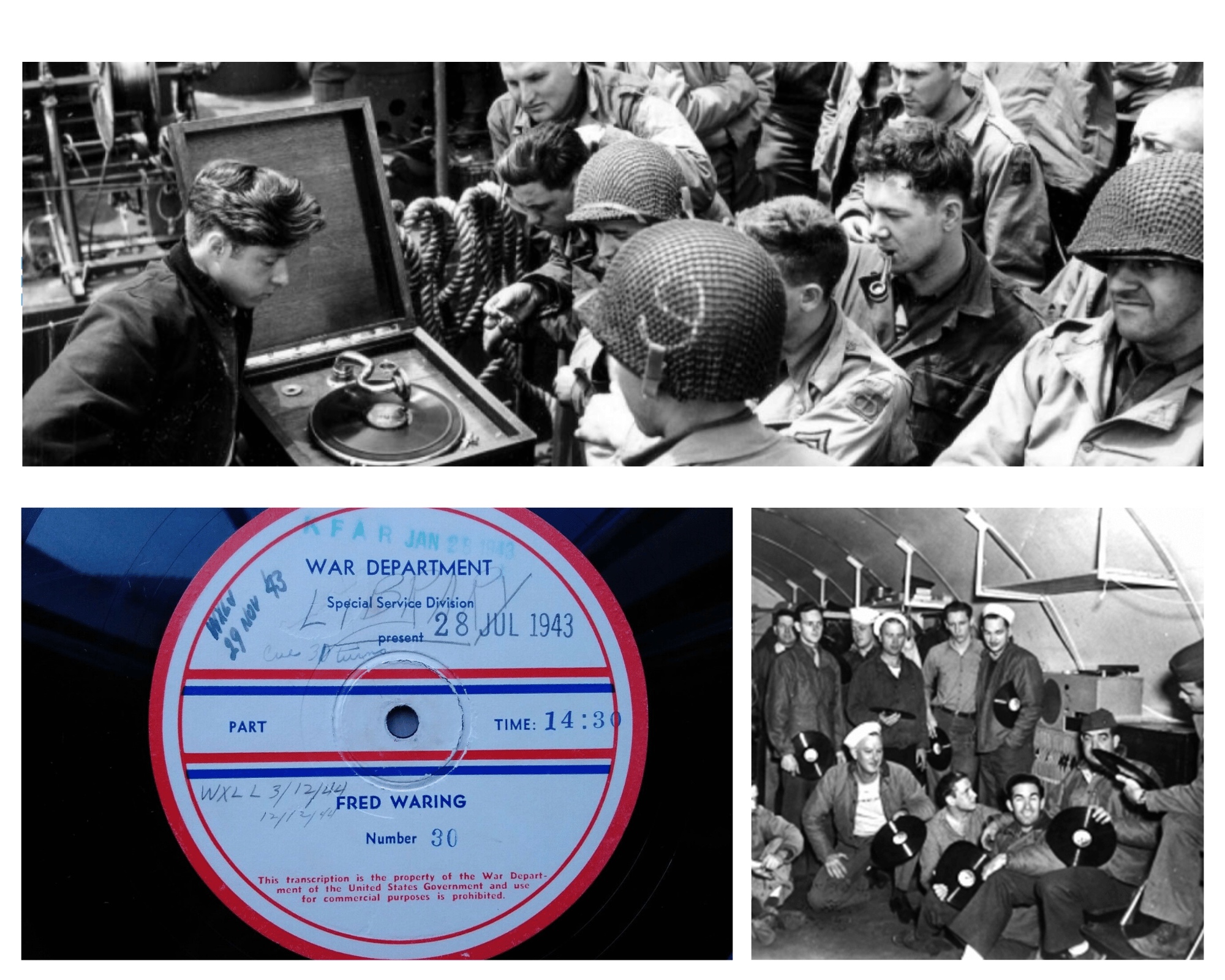
One of the most famous uses of 16-inch transcription records was for President Franklin D. Roosevelt's "fireside chats". These radio broadcasts were delivered directly to the American people and addressed various aspects of the war effort, as well as other issues of national concern. The transcripts of these broadcasts were recorded on 16-inch transcription records and distributed to military and civilian radio stations for broadcast.
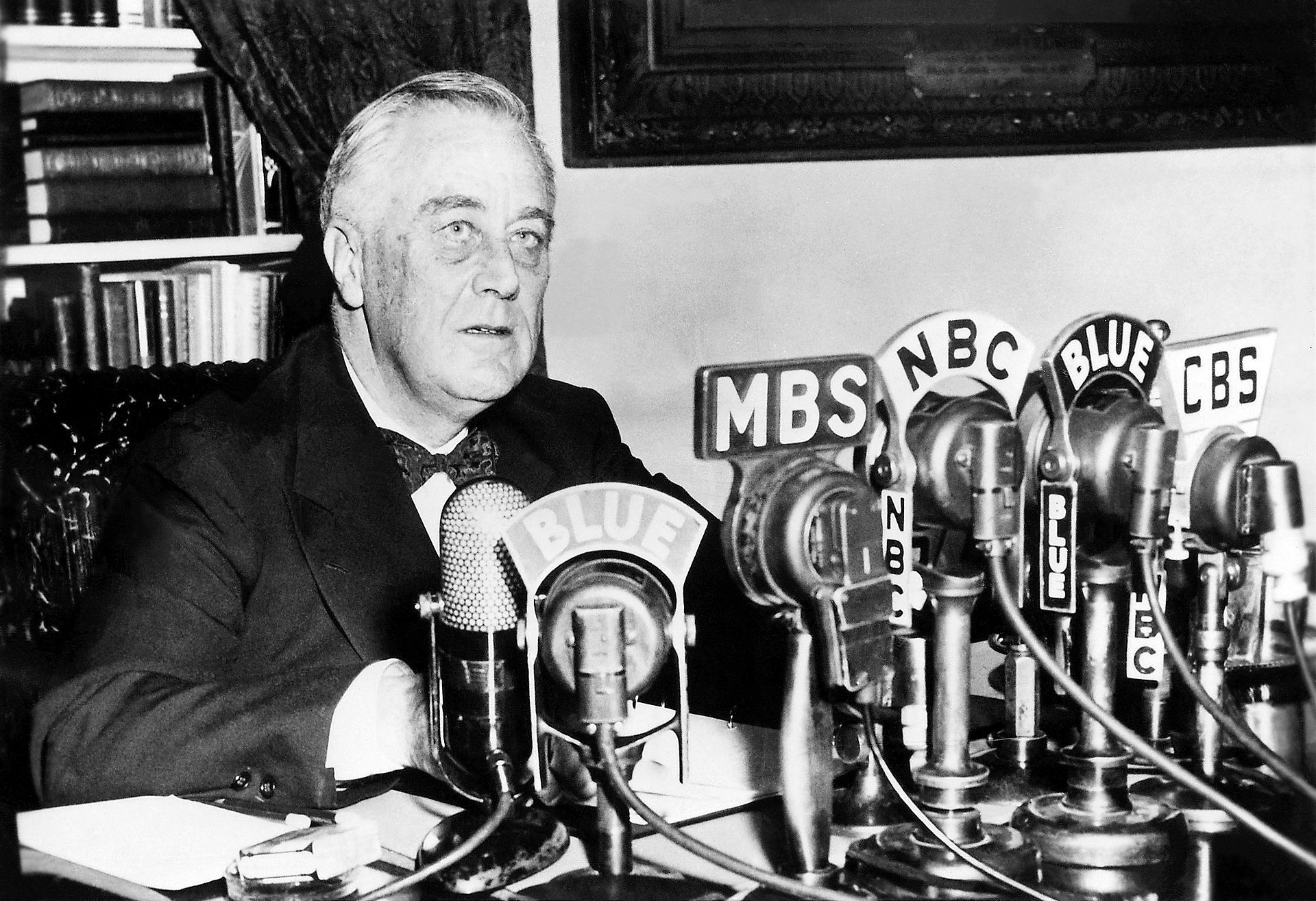
Another significant use of 16-inch transcription records was in the creation of "Victory Discs." These records were sent to soldiers serving overseas and contained recordings of popular songs, comedy sketches, Poetry, and messages from home. The purpose of these Records was to boost the morale of the frontline soldiers and provide a connection to home for the troops. Here we can assert that Gibran’s Prophet would have been selected to play such a role and rendered its inclusion. The affixed, (simply typed) and glued program label (see image below) gave a breakdown of what the record featured and in the case of Recording 1542 (WORDS WITH MUSIC) which features Gibran, the line up was as follows:
WORDS WITH MUSIC 1542
Raymond Burr of picture and radio fame opens the book of verse to the following selections...
COME IN by Robert Frost, SOLILOQUY WHILE PURCHASING A CAR by Helen G. Sutin,
THE FARMER'S BRIDE (this is extra special) by Charlotte Mew and an excerpt from THE PROPHET by Kahlil Gibran.
Hilton Spanningor supplies the organ interludes and background.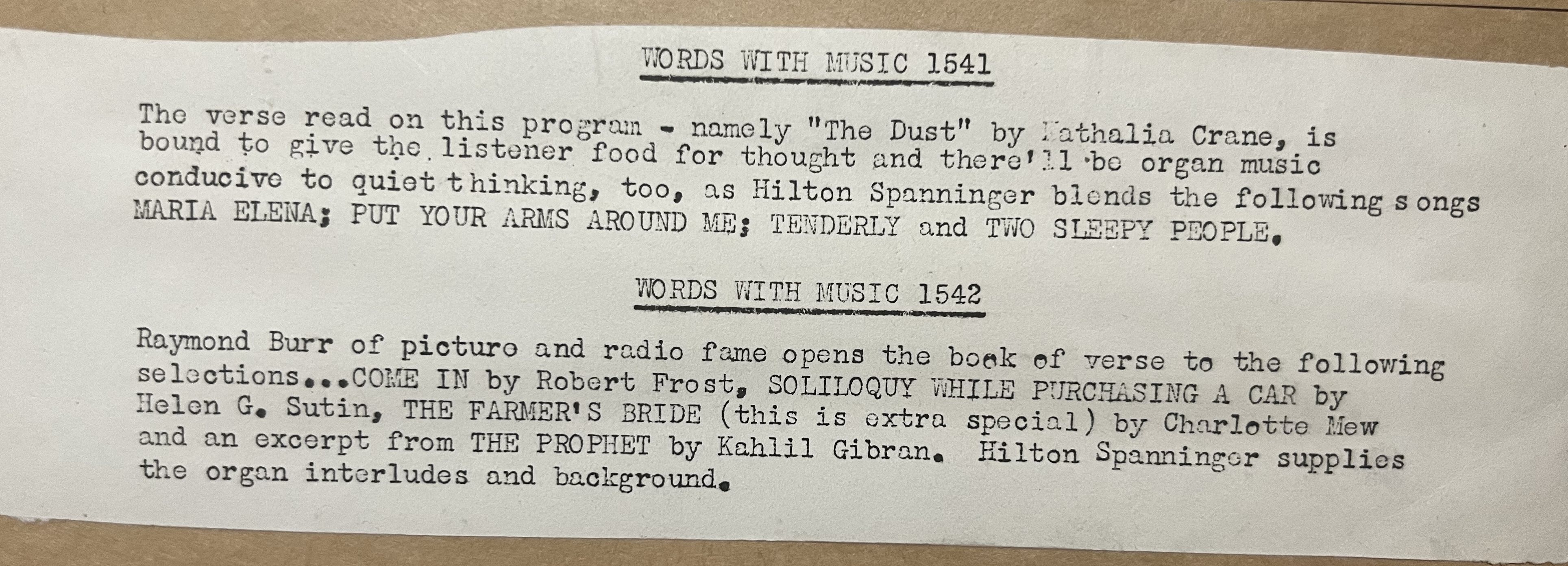
So once again, today is another day to celebrate the magnanimous and global voice of The Prophet, that seems to keep crossing into new frontiers. The fact that this Record(ing) may have given comfort to the many who fought such battles during those dark days of our modern history, makes me think of those visonary words that Mary Elizabeth Haskell predicted in a letter to Gibran in 1923 shortly after The Prophet was released, almost 100 years ago.
Generations will not exhaust it, but instead, generation after generation will find in the book what they would fain be – and it will be better loved as men grow riper and riper. It is the most loving book ever written.
*Special thanks to the indispensable Francesco Medici for bringing to my attention the sale of this item.